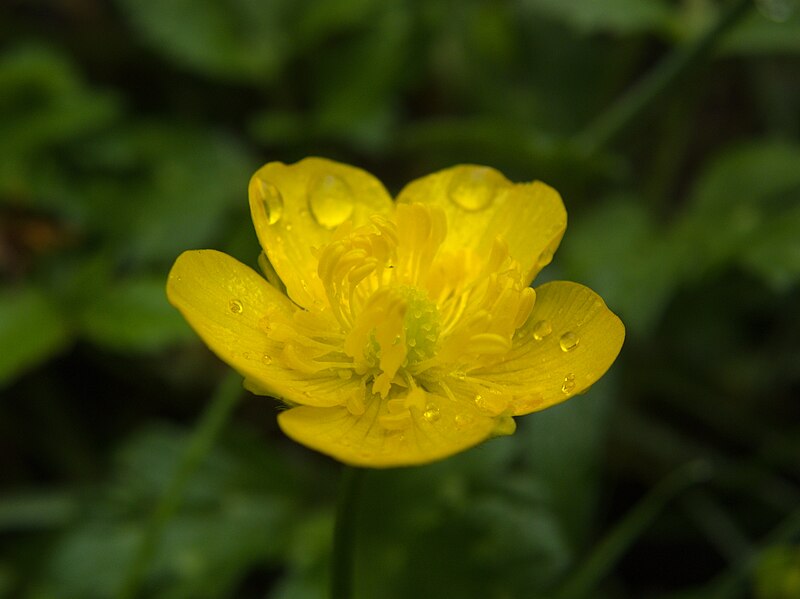
A common guest in our lawns, where you might as well get used to it, because it won’t go away without a fight. Children love the reflective petals, and they look particularly poetic with raindrops on them. The plants are poisonous, but they taste so awful (we are told) that cases of poisoning by buttercup are exceedingly rare.
A number of different species of Buttercup, all with similar flowers, have established themselves from Europe; this one can be recognized by its habit of sending out stolons—stems that root at the end and form another plant, so that a patch of buttercups in your lawn is likely to be a thick network of tough vegetable matter.
Gray (as revised by Merritt Lyndon Fernald) describes the genus and the species:
RANUNCULUS. CROWFOOT. BUTTERCUP. RECONCULE (Que.). Annuals or perennials; cauline leaves alternate. Flowers solitary or somewhat corymbed, yellow, rarely white. Petals plane or concave, often with a nectariferous spot or pit at base, mostly 5. (Sepals and petals rarely only 3, the latter often more than 5). Stamens mostly numerous, occasionally few. Large nearly worldwide group of herbs. — (A Latin name for a little frog; applied by Pliny to these plants, the aquatic species growing where frogs abound.)
R. repens L. (creeping), Creeping B. — Perennial with thick fibrous roots and commonly trailing or repent elongate branches (these sometimes undeveloped); flowering stems ascending; leaves dark green, often mottled with white; the lower ternately divided into mostly petiolulate deeply lobed or cleft rhombic leaflets, the terminal leaflet often 3-parted or -divided; middle leaflet of the larger leaves 1.5-6 cm. long, subsessile or on a petiolule up to 5.5 cm. long; sepals hirsute, spreading; petals 5-9, or very numerous in var. pleniflorus (double-flowered), golden-yellow, rounded-obovate, 6-17 mm. long, 4.5-15 mm. broad; stigma nearly covering one side of the short (0.5-1 mm. long) style, persistent; fruiting heads globose or globose-ovoid, 7-10 mm. thick; achenes obliquely obovate, flattish or biconvex, minutely pitted, narrow-margined, 2-3.5 mm. long excluding the deltoid-subulate beak (0.7-1.4 mm. long); receptacle villous. — Very variable.